Additional information for Physiospect 23
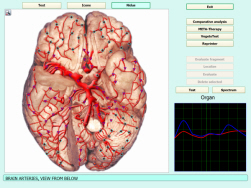
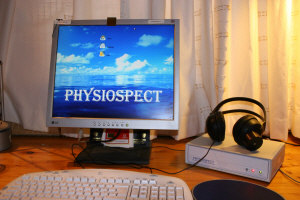
When you start up the 23 the first couple of pages are almost the same as the 17.
When you come to the first picture of the body, where you can tick of complaints you have:
GROUP OF BLOOD
FACE
ZODIAC.
This is information only.
On the right side you have:
EXPRESS
NORMAL
DETAILED
Be aware that only by clicking on "DETAILED" will all the options be available. You may have ticked off some DNA and/or RNA but unless you have selected "DETAILED" they will not be there for you to see.
"Auto-Therapy" can be useful for a quick body tuneup.
But be aware that if you repeat Auto Therapy it goes back to the beginning, and starts all over again.
For further improvements you have to select Meta Therapy as in 17.
When you go to "TEST" be sure that you have activated the Etalons that you want.
Click on "TOPIC" on the top of the page and select what you want
There is a lot of new stuff here, mostly nutritional supplements.
But some of the additions are quite interesting. .
The REPORT in the 23 is so much better.You can highlight anything on the test page, including description by highligthing and clicking on "To Print"
When you now go to "Print Research" on the first page, click on "Epicrisis:" Click on "Report" and there is a nice Analiz to print out.
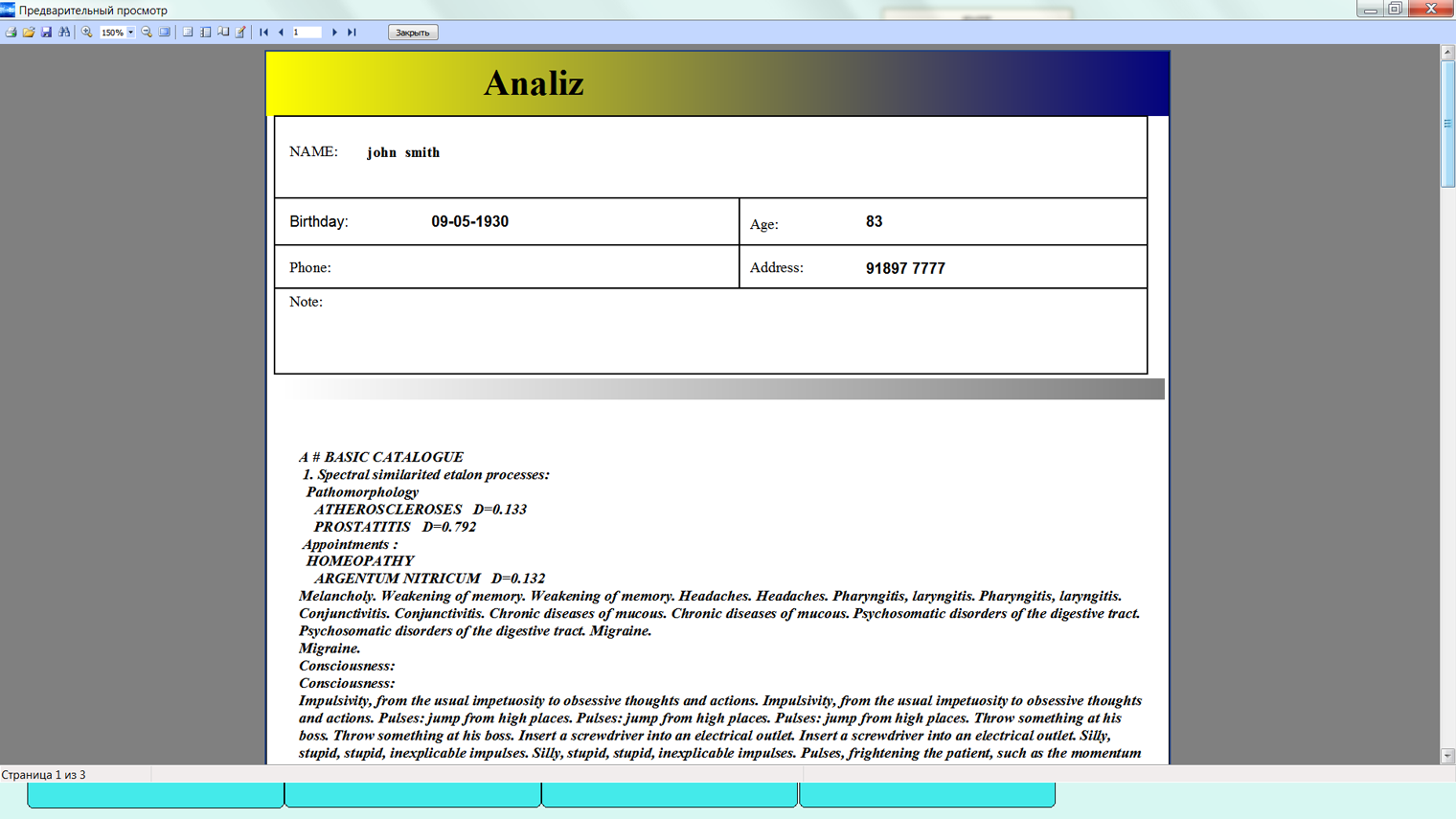
However any additional comments that you wish to add to the report has to be done on Epicris.
The manual 2 refers to Mora Therapia. This is a printing error.
We do not have Mora but Meta Therapy. Ignore this section
The manuals refer to 3 options where you can create custom made programs.
With the latest version we now have 10 options with a total of 683 organs/cells etc. to choose from.
ACUPUNCTURE
The acupuncture charts are not traditional Chinese but acupuncture according to Voll. These initial readings are normally heavy, but can be useful in detecting difficult issues.
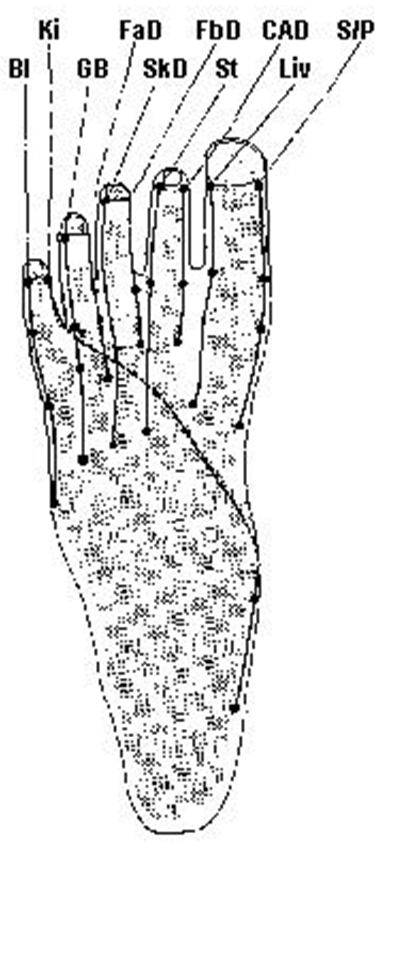
EAP Points on the Foot
S/P = Spleen/Pancreas
1 r: Pancreatic protein metabolism
l: White pulp of Spleen
(Neck/Thoracic lymphatics)
2 r: Pancreatic protein enzyme function
l: White pulp of Spleen
(Abdominal lymphatics)
3 r: Pancreatic carbohydrate enzyme function
l: Red pulp of Spleen
4 r: Pancreatic lipid enzyme function
l: Spleen Ret. Endo. System
Liv = Liver
1 Central venous system
2 Liver cells (parenchyma)
3 Perivascular system
CAD = Cartilage & articular (joint)
degeneration
1 Joints of pelvis area & lower extremities
2 Joints of shoulder area & upper extremities
3 Atlas, Axis, TMJ
St = Stomach
1 r: Pylorus l: Corpus (St-45)
2 r: Pyloric antrum l: Fundus (St-44)
3 r: Corpus l: Cardia (St-43)
FbD =Fibrous tissue degeneration
1 Abdominal organs
2 Organs of chest & neck
3 Organs of head, mouth, throat
SkD =Skin degeneration
1 Abdomen, lower extremities
2 Chest, upper extremities
3 Head
FaD =Fatty tissue degeneration
1 Abdominal organs
2 Organs of the chest
3 Organs & blood vessels of the head (egg. cerebral
sclerosis, paralysis)
GB = Gall Bladder
1 r: Common bile duct (GB-44)
l: Common hepatic duct
2 r: Cystic duct (GB-43)
l: Right hepatic duct
3 r: Gall Bladder (GB-42)
l: Left hepatic duct
4 r: Right billary duct (GB-41)
l: Left billary duct
Ki = Kidney
1 Renal pelvis
2 Pyelorenal border area
3 Renal cortex
Bl = Bladder
1 Bladder (Bl-67)
2 Fundus, cervix, sphincter (Bl-66)
3 Summation MP of gonads (Bl-65)
4 Epididymis, fallopian tubes (Bl-64)
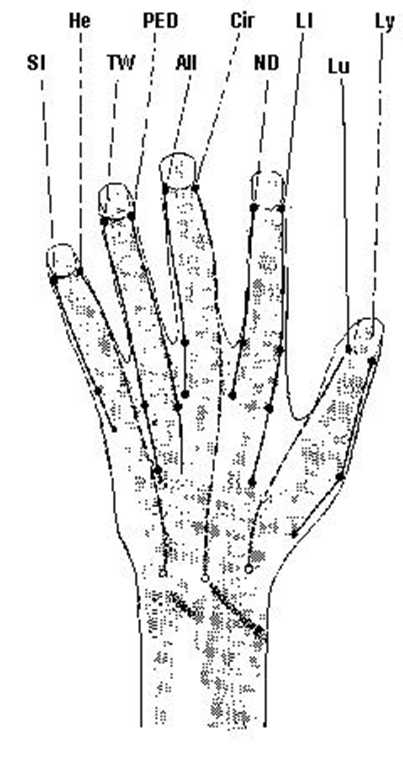
EAP Points on the Hand
Ly = Lymph
1 Tonsils
2 Jaw lymphatics
3 Paranasal sinus lymphatics
Lu = Lung
1 Alveoli (Lu-11)
2 Bronchi (Lu-10)
3 Trachea (Lu-9)
LI = Large Intestine
1 r: Transv. Colon rhs l: Sigmoid
2 r: Hepatic flexure l: Descending colon
3 r: Ascending colon l: Splenic flexure.
4 r: Appendix l: Colon transv. Sin.
ND = Nerve Degeneration
1 Lumbar/Sacral spinal marrow
2 Cervical/Thoracic spinal marrow
3 Brain, central ganglia, Medulla oblongata
Cir = Circulation
1 Arteries (Cir-9)
2 Veins (Cir-8)
3 Coronary vessels (Cir-7)
All = Allergy (and vascular degeneration)
1 Lower body
2 Upper body
3 Head, oral cavity, nose, sinuses
PED =Parenchymal and epithelial degeneration (& according to Mandel: Psyche)
1 Abdominal & pelvic organs
2 Thorax, Neck
3 Head
TW = Triple Warmer (Endocrine)
1 Gonads, Adrenal glands
2 Thymus, Thyroid, Parathyroids
3 Hypophysis (Pituitary), Epiphysis (Pineal)
He = Heart
1 Endocardium/Ventricles (He-9)
r: Pulmonary valve, l: Aortic valve
2 Endocardium/Atria (He-8)
r: Tricuspid valve, l: Mitral valve
3 Atrioventricular bundle (He-7)
4 Myocardium (He-6)
SI = Small Intestine
1 r: Ileum terminalis l: Ileum
2 r: Duodenum l: Jejenum
3 r: Duodenum l: Duodenal-jejunal
flexure
AURICLE:
This has nothing to do with the conditions of your ears, it is Ear Acupuncture.
Always very heavy readings:
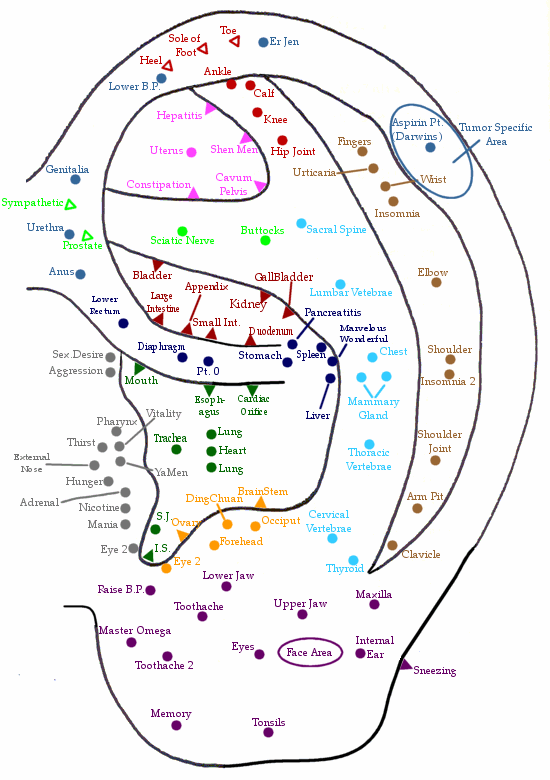
IRIS.
This is Iris diagnosis.
Nothing to do with the condition of your eyes.
Normally heavy initial readings.


CUTICLE OF HAIR.
This is an analysis using a sample of hair.
Usually done in a laboratory.
Be aware that some of the initial readings with the 23 are sometimes heavy.
However this seems to stabilize with further testing.
Physiospect does not provide specific medical advice, and is not engaged in providing medical and professional services. Use of Physiospect does not replace medical consultations with a qualified health
or medical professional to meet health and medical needs.
